If his destiny be strange, it is also sublime. ― Jules Verne, Twenty Thousand Leagues Under the Sea
The story of the palet breton is a short and simple one. Kind of like the cookie, if you think about it. Follow along.
A Swiss pastry chef, Jean Crucer, married a woman from Port-Louis in the department of Morbihan in the region of Brittany, in 1860. In honor of his Bretonne and his new hometown of Port-Louis, he took a basic pâte sablée, a sweet, butter-rich tart dough that bakes into a tender yet crumbly, cookie-like crust, and used it to create a thick, tender yet crumbly cake. To distinguish his golden cake, he marked the surface of the dough with crosshatchings using a fork. He carried his gâteau Lorientais (Port-Louis is a small town near the more famous Lorient) as he dubbed it, to the Paris Expositions Universelles, the 1867 World’s Fair, where it won first prize in its category, pâtisseries sèches. Pâtisseries sèches are basically our old friends les gâteaux de voyages, “travel cakes”, or hard cookies and dense, moist cakes with qualities and ingredients that allow the cake to keep at room temperature for long periods, are easily transportable, and remain good to eat for weeks.
Upon his triumphant return home, he continued to bake and sell his cake, most traditionally filled with a prune filling, which became immensely popular on both land and sea, as sailors found it the perfect cake to carry with them on long periods out at sea.

Inspired by the success of what became known as the gâteau breton, Isidore Penven, young baker in the town of Pont-Aven, also in Brittany, took the idea of the cake and created a flat, crunchy, butter-rich, cookie-sized sablé that he called the galette, in 1890. Same recipe, same by-now-familiar markings on the surface of his cookie, echoing those of Crucer’s famous cake, the galette, named, no doubt, after the flat stones found on Brittany’s beaches, became so popular Penven made it his bakery’s principal production.
A few years after Isodore’s death in 1914, his widow Francine remarried. She and her second husband, Alexis Le Villain, also a baker, continued running the family bakery and the production of the popular galette cookies. Whether they decided to alter the recipe or whether by an accident made while weighing out the ingredients, a new cookie, thicker and more tender than the crunchy galette, was created. The palet breton was born in 1920 and the couple named it Traou Mad, breton for “good things”. This new cookie became a roaring success in its turn and they trademarked the name Traou Mad. 100 years later, both of these cookies are still being made in Pont-Aven.
The Traou Mad with its uniquely distinguishable size and shape - a thick disc - quickly became known as palets, due to their resemblance to the thick metal or wooden discs used in the jeu des palets or “game of pucks”. The jeu des palets, a game popular in Brittany since the 15th century (François Rabelais’ giant character Gargantua was known to enjoy playing palets) consisted in tossing these pucks on the ground or, later, a wooden board, much like petanque.
Success begets success: the popularity of the gâteau breton inspired the creation of the galette bretonne which in turn led to the creation of the palet breton, and in an incredibly short time, all 3 have become culinary specialties emblematic of the traditional cuisine of Brittany.
What these 3 iconic treats - the gâteau breton, the galette bretonne, and the palet breton - have in common is that all are variations on the sablé; each are made from the same simple ingredients: flour, salt, egg yolks, and pure salted Brittany butter, lots and lots of butter and it better be salted (demi-sel), the only butter used and eaten in Brittany. If a flavoring is added, it is simply flavored with vanilla. Baking powder is added to the palets bretons and the gâteau breton, giving each an airier, more tender texture than the galettes cookies. But what distinguishes each of these variations on the sablé is the crumbly texture: sablé means sandy, and these are similar to a shortbread, being tender yet crumbly, and crunchy if baked thinly enough or long enough.
Traditional or Chocolate Palets Bretons (Butter Cookies from Brittany)
The 2 recipes are combined here, the only difference being the addition of a tablespoon of cocoa powder for the chocolate version or an additional tablespoon of flour (replacing the cocoa powder) for the traditional vanilla version. Just decide which you want to make before starting… the recipe makes 10 to 12 X 2 to 2 1/2-inch (5 to 5 1/2- cm) cookies.
Note: Slice the dough as thinly or as thickly as you like the cookies; thinner cookies will be crunchier. Underbake them slightly for a moister cookie, a bit longer for a drier, more crumbly cookie. These cookies are so butter-rich that they will spread as they bake unless placed in individual round molds, a straight-sided muffin tin (silicone works best) or stainless steel pastry ring molds which will help them retain their perfect roundness.
1 cup (5 ounces, 140 grams) flour
1 teaspoon (5 grams) baking powder
Pinch (about ⅛ teaspoon) salt
* 1 tablespoon (10 grams) more flour for traditional vanilla palets -OR- 1 tablespoon (8 grams) cocoa powder for chocolate palets
2 large egg yolks
⅖ cup (80 grams) sugar
5 tablespoons + 1 teaspoon (80 grams) salted butter (beurre demi-sel), softened to room temperature
¼ teaspoon vanilla extract
For perfectly shaped cookies, have ready a straight-sided muffin tin, preferably silicone (they pop out really easily), or several stainless steel baking/pastry ring molds of the same size. Ideally, the muffin or the metal molds will be approximately 2 1/2-inch (5 to 5 1/2- cm) wide.
Stir the flour, baking powder, salt, and either the extra tablespoon flour or the tablespoon cocoa powder together in a bowl.
Beat the egg yolks and the sugar together until thick and pale, scraping down the bowl a couple of times. This should take only about 2 minutes.
Beat in the soft butter - I add and beat in chunks in about 5 or 6 additions - and the vanilla until blended and thick.
Beat in the dry ingredients in 3 or 4 additions, scraping down the bowl as needed, making sure the dry ingredients on the bottom are scraped up and incorporated in.
Scrape down the bowl and beat it briefly to make sure it is well blended; the dough should pull together.
Scrape the dough onto a piece of plastic wrap; lightly pat and shape the dough into an even log, giving it the desired diameter depending on how wide you want your biscuits – I roll mine into a 7 to 8 inch long log for about 10 to 12 cookies. You’ll see the width is just under the width of my muffin cups.
Wrap the dough in the plastic wrap, make sure the log is even and smooth and refrigerate to firm for about 30 to 40 minutes.
Preheat the oven to 325°F (170°C).
Carefully unroll the cookie dough and slice; the dough may still be soft and pliable so try and keep the dough in the log shape. Cut into ½ inch (1 cm) slices; gently reshape the discs into rounds and place on a baking sheet or, preferably, in muffin cups or small metal circles (they won’t spread if contained in a mold and will keep their disc shape).
Bake for about 10 to 20 minutes or until set and just firm in the center - baking time depends on the size and thickness of your cookies, your oven, as well as the mold you bake them in. Just keep an eye on them.
I use a 6-cup, straight-sided silicone muffin tin refilling it twice for 2 bakings, keeping the extra dough wrapped and in the refrigerator until sliced and baked. The baked cookies pop out really easily.
Remove from the oven and allow to cool for a few minutes before lifting them to a cooling rack to cool completely before devouring.
Thank you for subscribing to Life’s a Feast by Jamie Schler where I share my recipes, mostly French traditional recipes, with their amusing origins and history. I’m so glad that you’re here. You can support my work by sharing the link to my Substack with your friends, family, and your social media followers. If you would like to see my other book projects in the making, read my other essays, and participate in the discussions, please upgrade to a paid subscription.
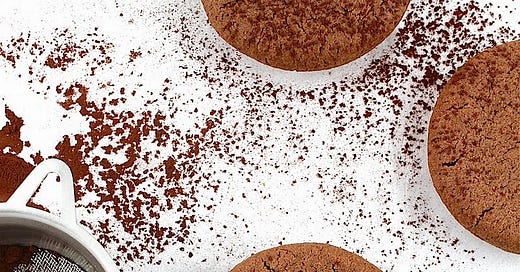



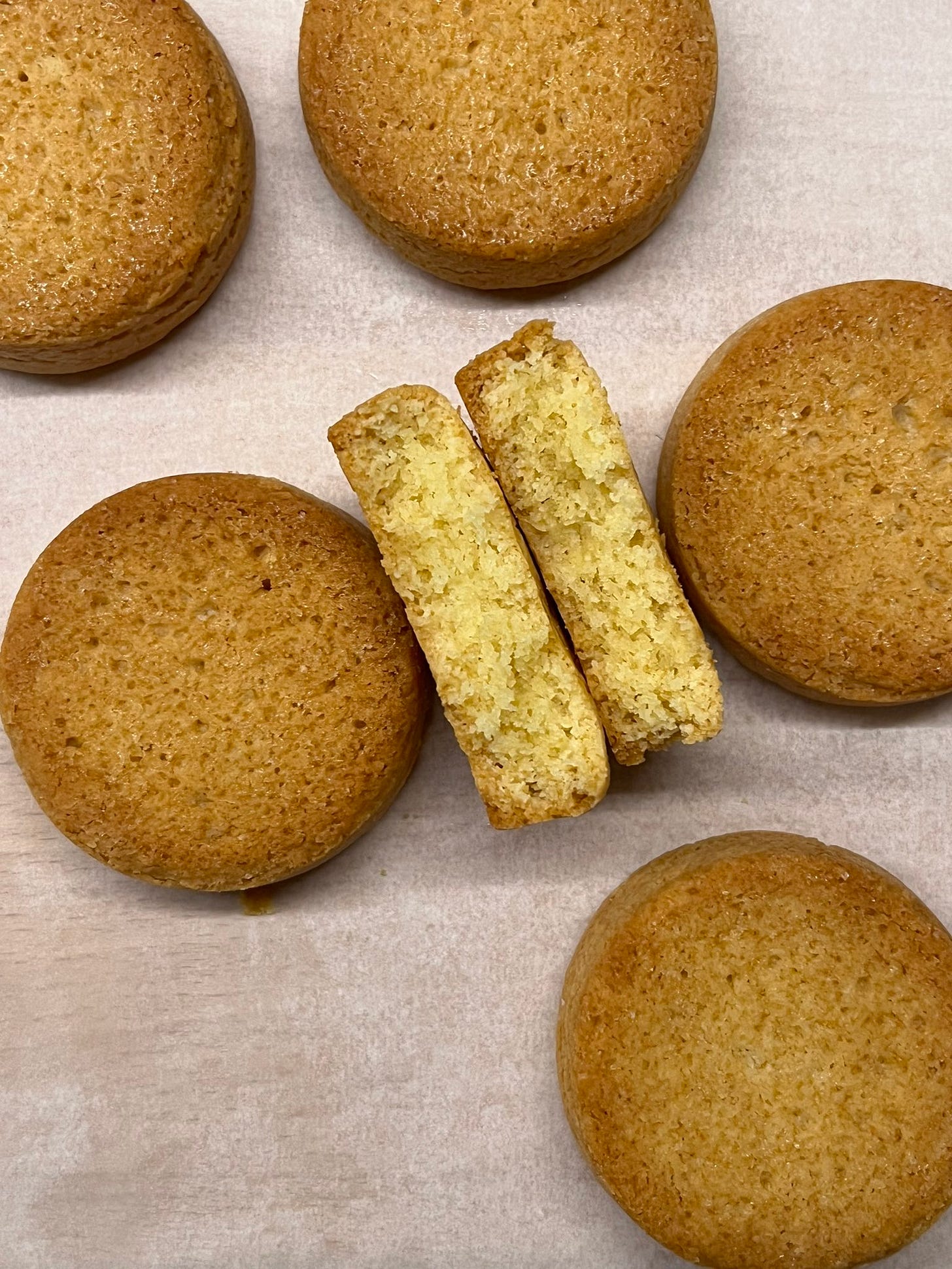

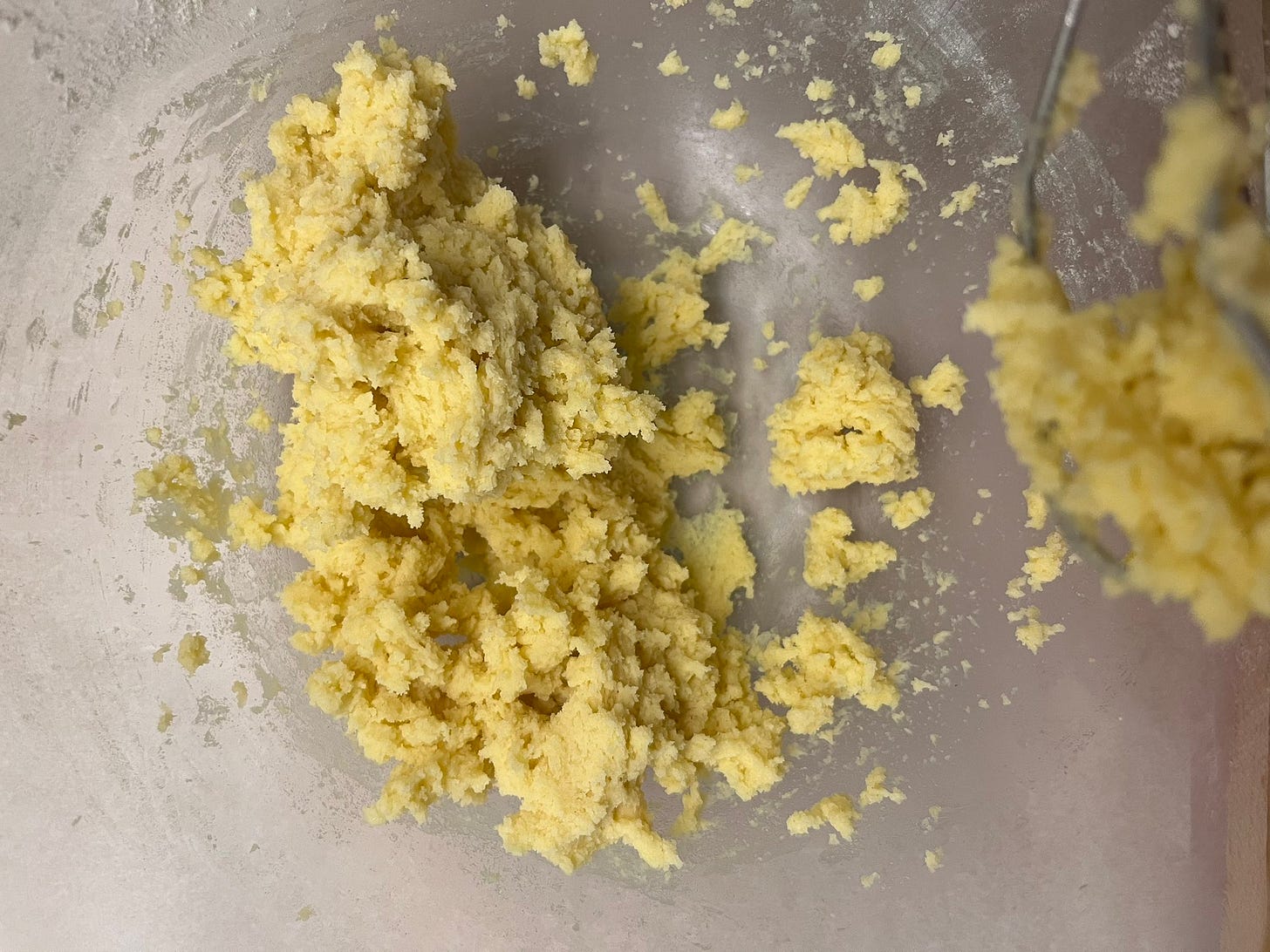

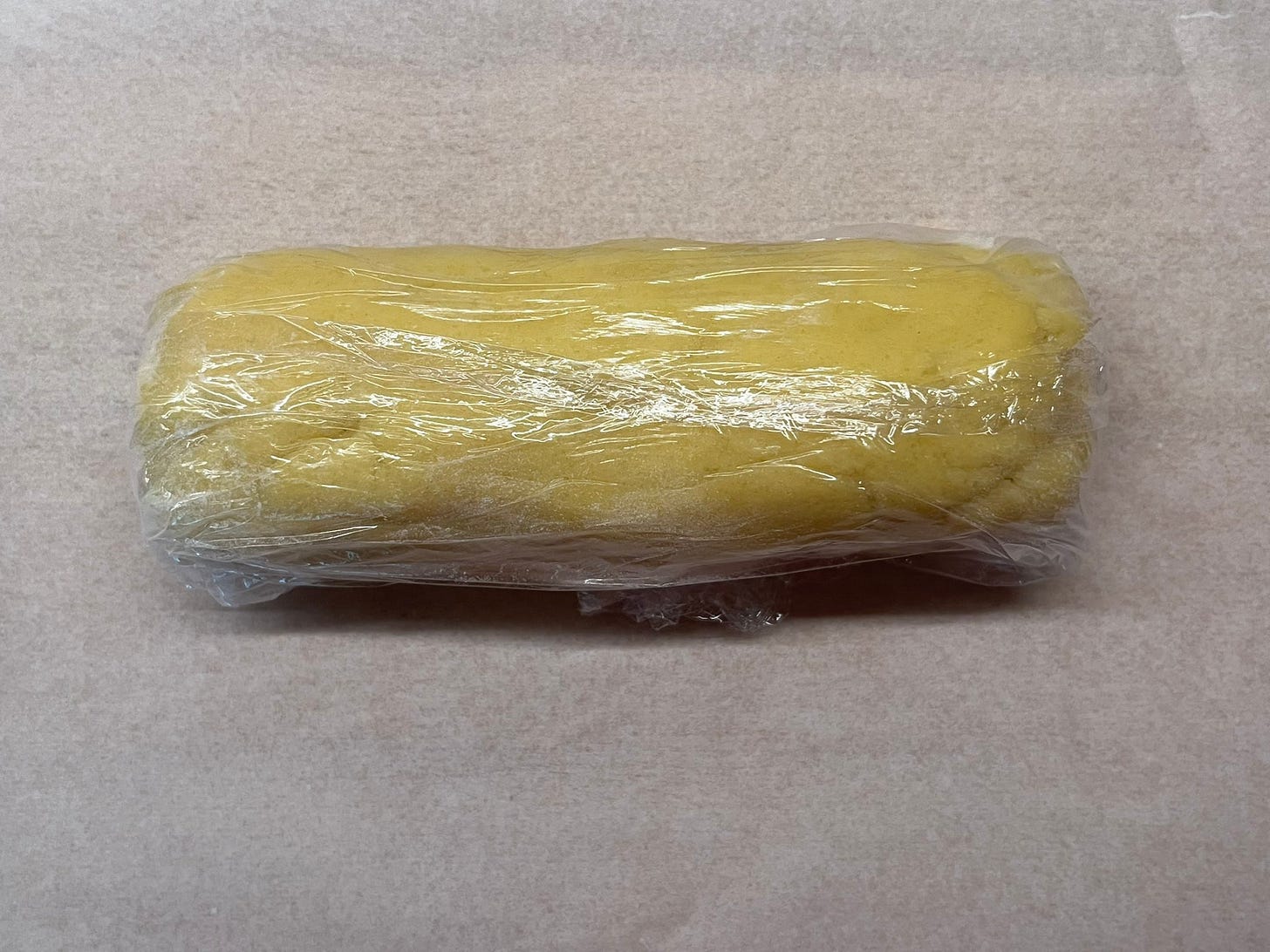
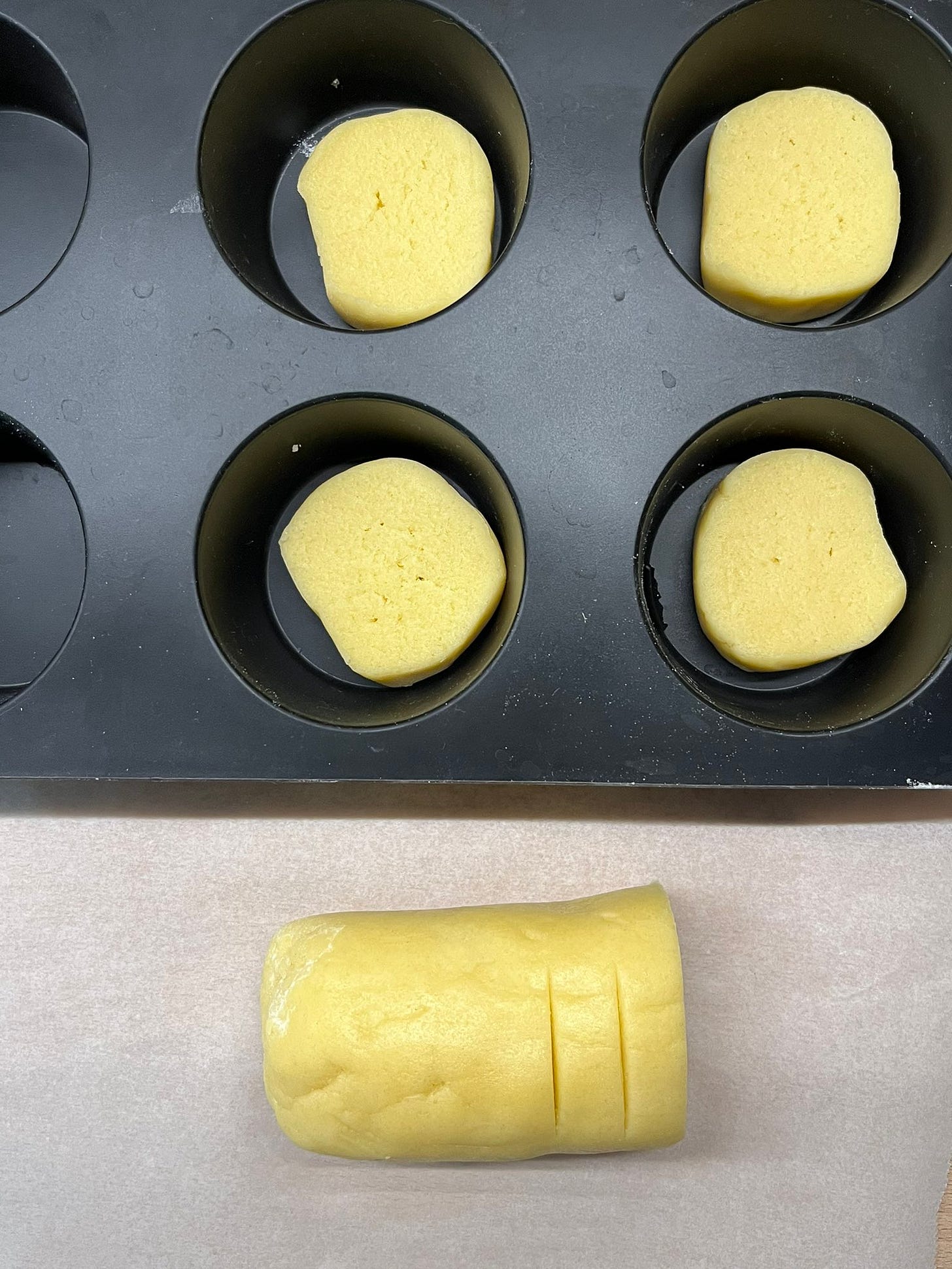
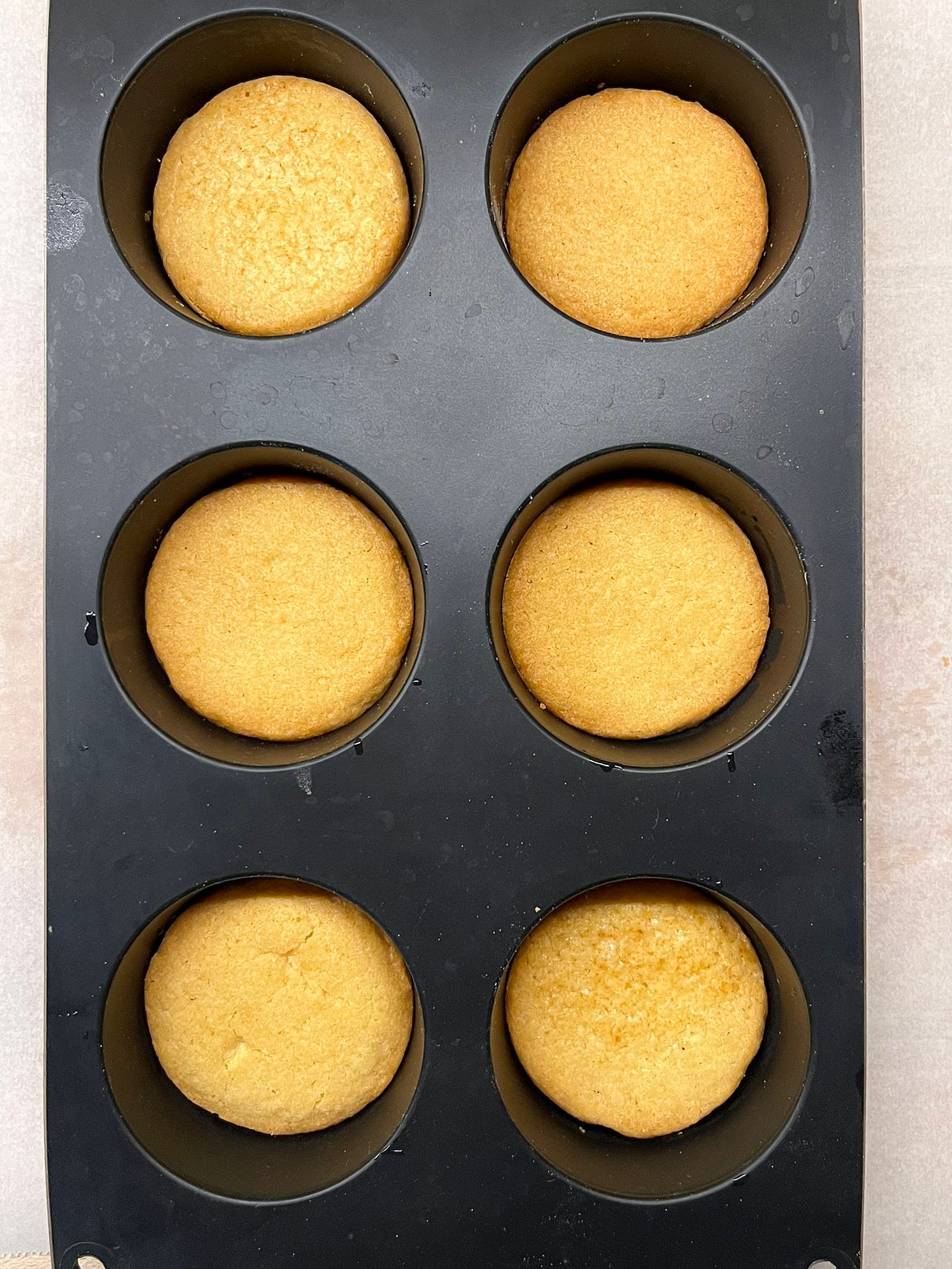


Where do you find the time Jamie. I’m giving these a go. Thanks p🙏
I love every version of shortbread cookies. Merci, Jamie!